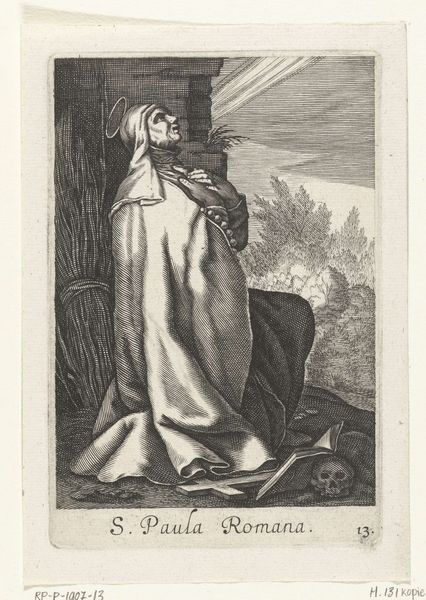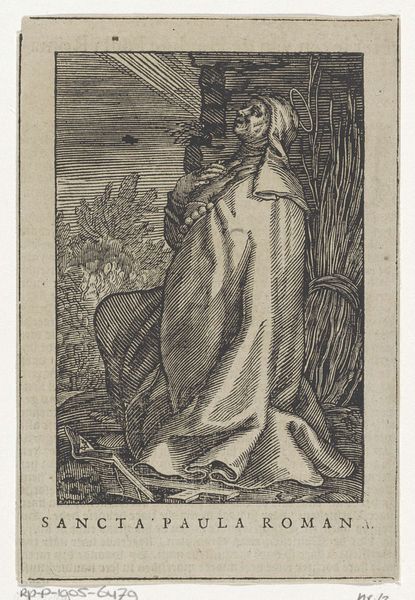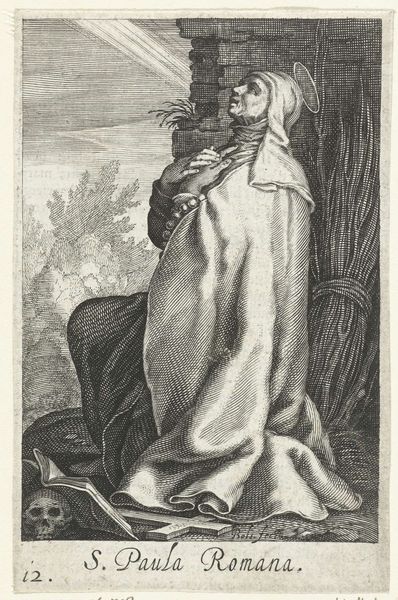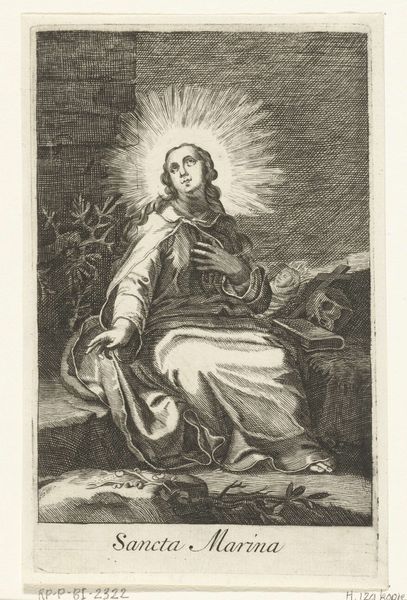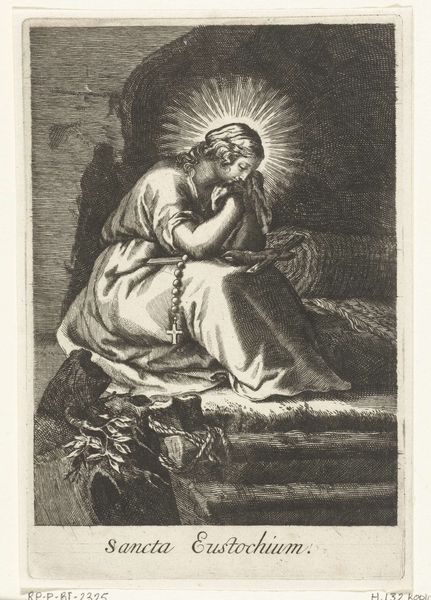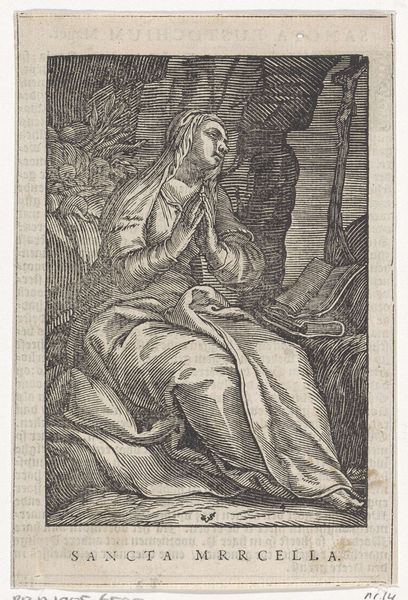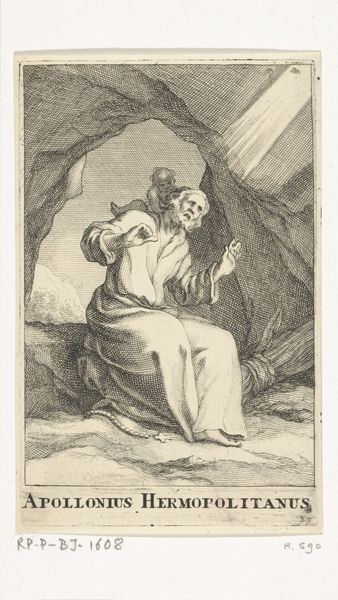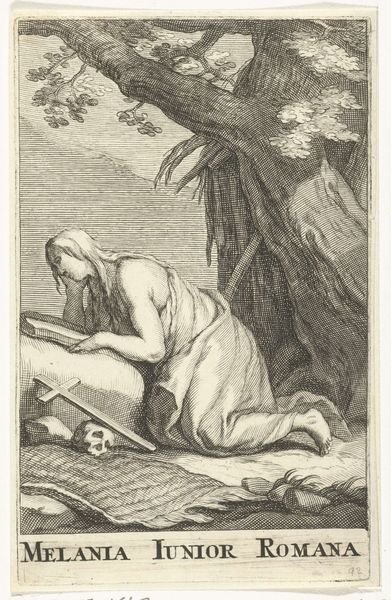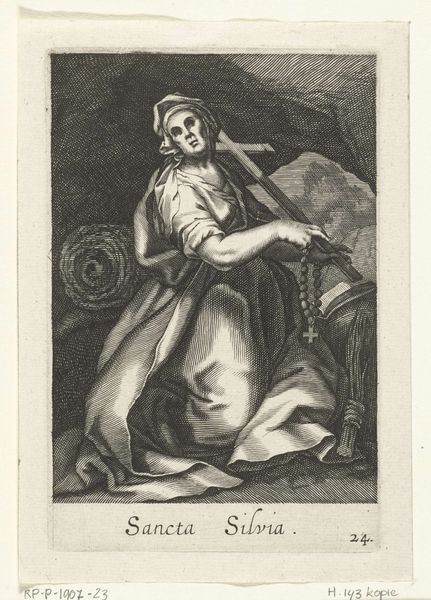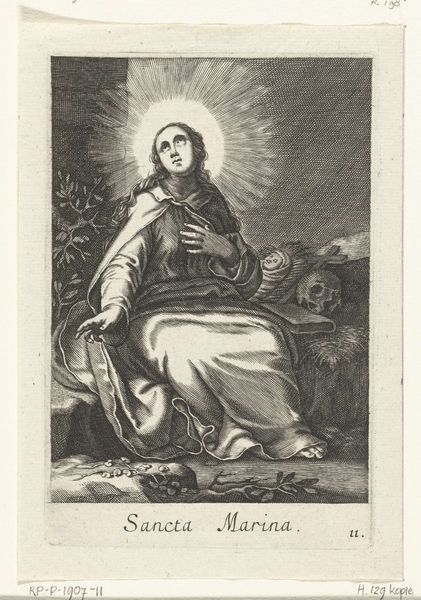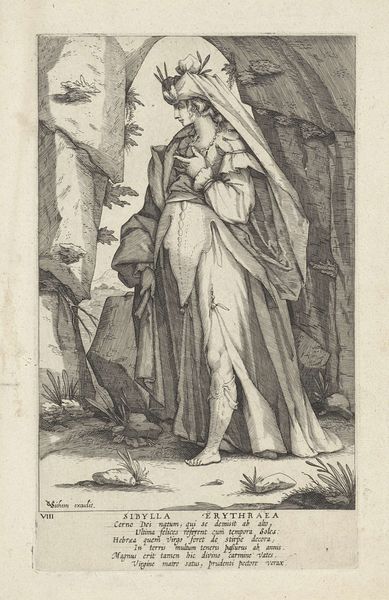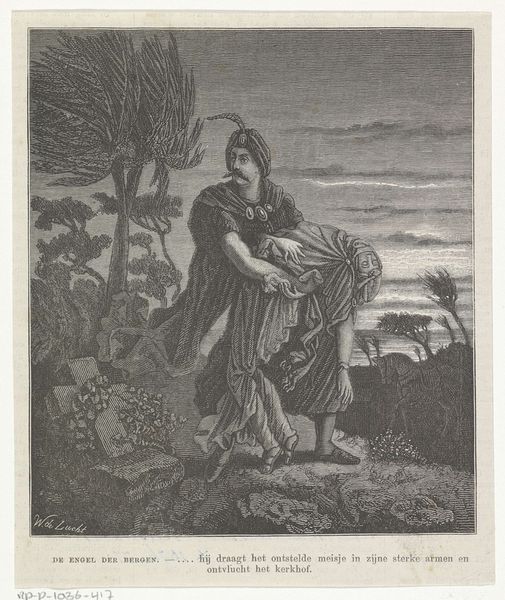
engraving
#
portrait
#
baroque
#
history-painting
#
engraving
Dimensions: height 161 mm, width 110 mm
Copyright: Rijks Museum: Open Domain
Curator: What strikes me immediately about this image is its intensity; it’s stark, the contrast between light and shadow dramatic. Editor: And what you are responding to, is beautifully encapsulated in "Heilige Paula van Rome als kluizenares" or Saint Paula of Rome as a Hermit, an engraving crafted sometime between 1590 and 1662. It's currently housed here at the Rijksmuseum. It's an interesting piece showcasing Baroque style combined with portraiture elements. Curator: Yes, the use of engraving—the meticulous labour, the pressure of the burin against the plate—lends itself perfectly to this sense of austerity. You feel the artist's hand in creating this very defined scene. And look at the cross and skull laid down, the simple materials telling the story. Editor: And consider the socio-political context in which this image was created; such images, portraying saintly virtue, were vital to the visual rhetoric of the Counter-Reformation. The engraving, as a relatively accessible medium, allowed these images to circulate widely, promoting a specific idea of piety and female sainthood to a broad audience. Curator: Exactly, that distribution speaks volumes! The material production meets cultural consumption head-on. Was the choice of engraving practical due to widespread distribution? I also find myself thinking about the skilled artisan behind it, their role in shaping public perception and the relationship between their labour and the values represented. Editor: It would be intriguing to uncover just who this “Anonymous” was. Perhaps examining related images might allow us to find comparable methods of construction of gender, faith, and authority. How do portrayals of women in similar works shape viewers' expectations of proper female conduct? Curator: Food for thought indeed! The visual economy created through the means of production impacts broader socio-political and artistic landscapes. Editor: Agreed. Understanding these layers helps us appreciate how cultural objects function within intricate webs of influence. It adds to this art work more appreciation of history of it!
Comments
No comments
Be the first to comment and join the conversation on the ultimate creative platform.
